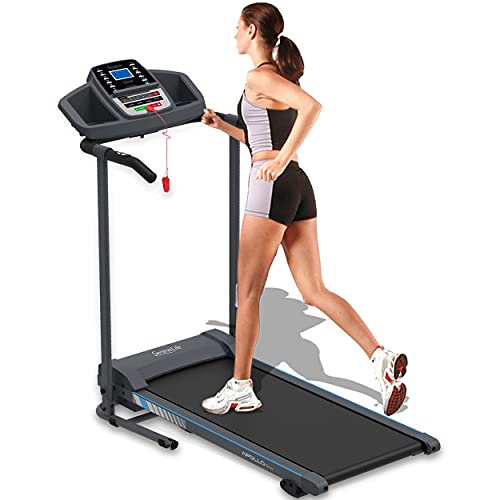The Rise of Non-Electric Running Machines: A Sustainable Approach to Home Fitness
Recently, the physical fitness market has actually seen a considerable shift towards sustainable and energy-efficient devices. Among the wide variety of options, non-electric running devices have taken a specific niche on their own, attracting physical fitness lovers who value eco-friendliness, performance, and cost-effectiveness. This post checks out the advantages of non-electric running machines, compares them with their electric counterparts, and responses regularly asked questions about these innovative physical fitness tools.
What is a Non-Electric Running Machine?
A non-electric running machine, frequently referred to as a manual treadmill, is a piece of exercise equipment that permits users to stroll or run without the need for electricity. Instead of depending on source for this article , these makers use the user's own physical effort to move the running belt. This function not only makes them ecologically friendly but likewise encourages a more natural and engaging workout experience.
Key Features of Non-Electric Running Machines
| Feature | Description |
|---|---|
| Self-Powered | Operates without electricity; users power the treadmill through their movements. |
| Adjustable Incline | Most designs offer incline settings to enhance workout intensity. |
| Compact Design | Normally lighter and more space-efficient than electric treadmills. |
| Low Maintenance | Less electronic parts implies simpler upkeep and longevity. |
| Sturdiness | Constructed with robust products to hold up against intense use; often more rugged than electric models. |
Advantages of Non-Electric Running Machines
1. Eco-Friendly
Being self-powered, non-electric running machines do not contribute to carbon emissions or energy intake. For ecologically mindful consumers, this element lines up with a lifestyle that focuses on sustainability.
2. Affordable
Without the need for electricity, users can conserve cash in the long run, both in terms of energy expenses and the expense of upkeep. The lack of intricate electronics implies less probability of breakdown, possibly minimizing repairs.
3. Engagement and Intensity
Due to the manual nature of operation, users engage more muscles during the workout. This can result in a more extreme cardiovascular workout, as the effort is completely determined by the user's pace and force.
4. Versatility
Non-electric running machines appropriate for numerous exercises, from light jogging to high-intensity interval training (HIIT). In addition, lots of designs allow users to change the incline, which can assist target various muscle groups and enhance workout effectiveness.
5. Noise-Free Operation
Unlike electric treadmills that may have motors running, non-electric makers work calmly, making them perfect for home usage where noise might be an issue.
Comparison: Non-Electric vs. Electric Running Machines
To provide a clearer understanding, the table below compares the primary functions of non-electric and electric running machines:
| Feature | Non-Electric Running Machines | Electric Running Machines |
|---|---|---|
| Power Source | Manual (user-powered) | Electric (motor-driven) |
| Noise Level | Quiet | Can be noisy due to the motor |
| Area Requirement | Often more compact | Can be bulkier due to the motor |
| User Control | Overall control over speed and strength | Speed and incline settings adjusted electronically |
| Maintenance | Low, generally mechanical checks | Higher, due to electrical parts |
| Preliminary Cost | Typically lower | Normally greater price point |
Picking the Right Non-Electric Running Machine
When choosing a non-electric running machine, potential purchasers should consider numerous aspects:
Key Considerations
- Material Quality: Look for devices built with resilient elements that can withstand regular usage.
- Weight Capacity: Check the weight limits to ensure it can accommodate all designated users.
- Adjustable Features: Opt for designs that use adjustable inclines and other personalized settings to improve workout variety.
- Footprint Size: Ensure the machine fits conveniently in your designated exercise location.
- User Reviews: Research feedback from other buyers to assess reliability and performance.
Popular Non-Electric Running Machines
Here are some well-regarded non-electric running makers offered in the market:
- AssaultFitness AirRunner: Known for its strong build and adaptability for numerous workouts.
- TrueForm Runner: Offers a distinct curved design for a more natural running experience.
- Woodway 4Front: High on toughness and includes a special slat belt for smooth operation.
- XGear Fitness Manual Treadmill: Budget-friendly with adjustable incline alternatives.
- Sunny Health & & Fitness Manual Treadmill: Compact and simple to utilize for beginners.
FAQs About Non-Electric Running Machines
Q1: Are non-electric running devices suitable for novices?
A1: Yes, non-electric running makers can be suitable for beginners. Users can manage their speed quickly and slowly increase their intensity as their fitness levels enhance.
Q2: How do I keep a non-electric running machine?
A2: Maintenance generally involves examining belt tension, oiling the moving parts, and making sure that all components are safe. This is usually less demanding than keeping electric treadmills.
Q3: Can I perform high-intensity workouts on a non-electric running machine?
A3: Absolutely! Non-electric makers are ideal for high-intensity exercises, as they rely solely on the user's effort, which can easily be ramped up.
Q4: Are non-electric running devices ideal for all physique?
A4: Most non-electric running makers can accommodate a range of physique, but it's vital to inspect the specific weight limit and dimensions of each design.
Q5: Do non-electric running makers need any setup?
A5: Most non-electric running makers require minimal setup, and some might be all set to utilize best out of package.
Non-electric running makers use an engaging alternative to conventional electric treadmills, marrying sustainability with effective exercise alternatives. As fitness enthusiasts become more mindful of their environmental effect, these makers are most likely to increase in appeal. With their myriad advantages and differed choices, non-electric running devices can effortlessly fit into a health-oriented lifestyle, making them a beneficial factor to consider for anyone wanting to boost their fitness journey.

